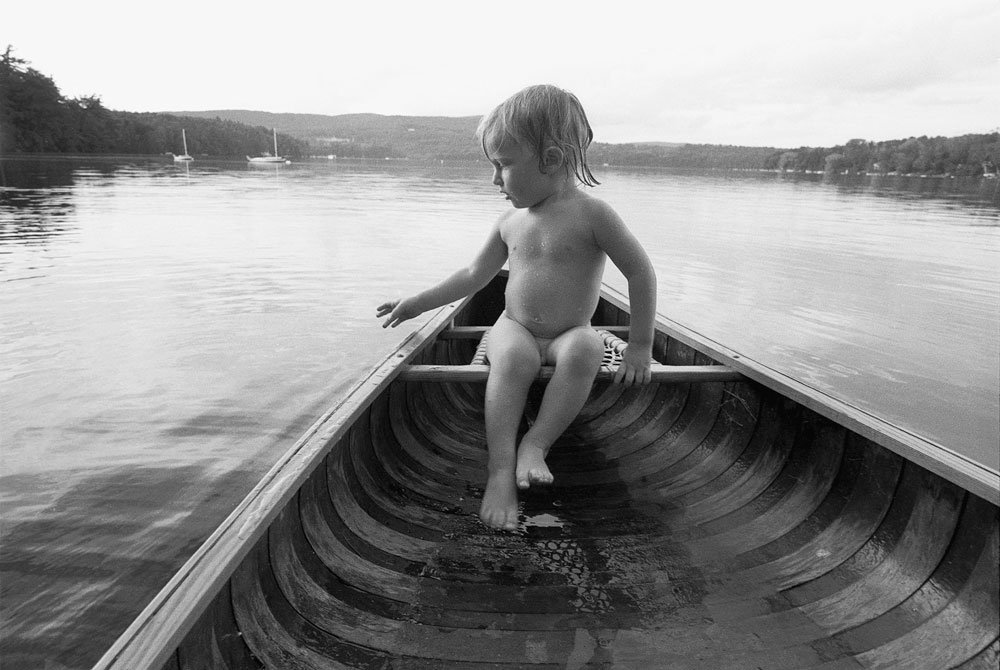
Stephanie Gross was intrigued early by pictures and their stories. “I spent a lot of time as a kid looking at pictures,” she says. ”My mom was a docent at the National Gallery and she used to walk me through the West Wing. We’d look at paintings and she’d talk about their composition, how your eye moves around the frame, and about the stories they were telling. For me, it was like this giant picture book that we could walk through. I think a lot of that has stuck with me.”
While first fascinated by famous paintings, especially those by Sargent, the Dutch portraits and Post-Impressionists, Gross discovered photography at HB Woodlawn High School in Arlington, VA. Her “fabulous teacher” Lloyd Wolf, introduced her to influential photographers who mostly shot in black and white. They included Cartier-Bresson, Diane Arbus, Mary Ellen Mark, Emmet Gowin, Irving Penn, Alfred Stieglitz, Robert Frank and Elliot Erwitt. “I think a lot of his ideas about image making—not technically but ‘spiritually’—have influenced my thoughts about photography.”
“Lloyd talked about using photography to see...to really look at the world around you, not to breeze through it unaffected. When photography is coming together, there’s no boundary between what you are looking at and experiencing yourself. Once you see the world, you are engaged and to some extent also responsible for what you see.”
Wolf, says Gross, has always used his work for social justice, to give a voice to those who had little public voice. Through him, she became involved with Shooting Back, a project in which local photographers worked with children in homeless shelters in the Washington area.
After high school, Gross pursued photography at the Rhode Island School of Design and then joined the photography staffs of The Journal Papers of Northern Virginia. In 1991, before moving to The Daily Progress in Charlottesville, she took time out to travel to Thailand and Cambodia.
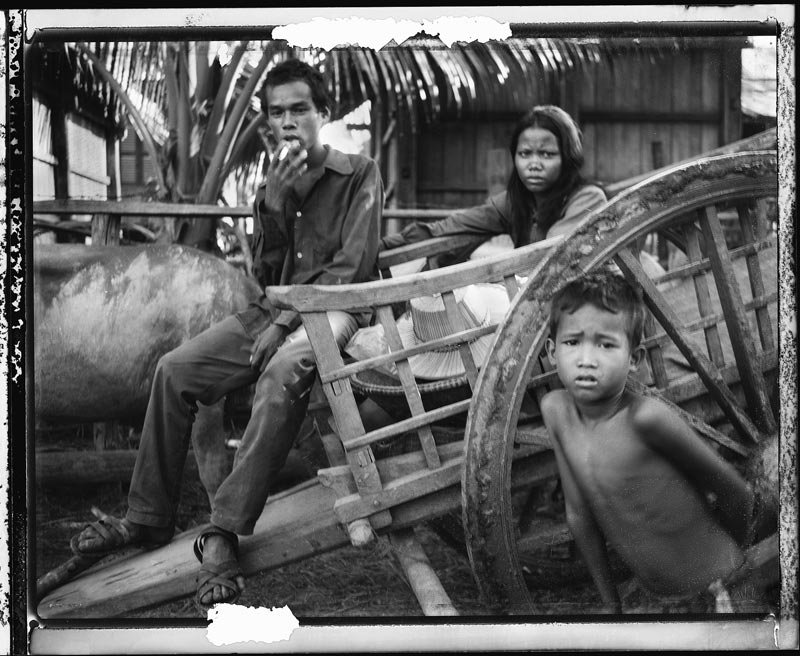
This arresting photograph would preview portraits to come. “There are three people in the picture, but to me, the portrait is of the kid in the front. That desperate look of concern. He’s showing us what his world is like.”
During her six years at The Daily Progress, Gross covered sports and news events, off-beat places and interesting people, her portraits always appealing. Now, as an independent photographer shooting portraits on her own or for commercial clients, Gross approaches her subject in terms of story. How, she asks, does one take the best picture to reveal the moment’s emotion as opposed to the literal activity and setting? “I think the only difference between the pictures I make for myself and pictures I’m assigned is the story—if the story is generated by somebody else for their needs versus some moment of inspiration that says ‘I want to make this picture.’
“So whether photography is truth or fiction, it’s the amalgamation of who the photographer is, what he/she brings to the table, her voice, the things that interest her and where that intersects with the story she’s trying to tell. A long time ago, someone told me photographs are always self-portraits. You bring yourself to the assignment, and yet on an editorial or commercial assignment, also try to speak for the story that the client wants to tell.
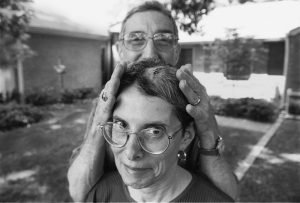
“When I photograph my family or someone I know well, I have my whole story about who they are. Even if I’m just trying to tell a little sliver about them, one moment out of their lives, one aspect of who they are, I start with much more intimate knowledge of whom they are.”
Stephanie’s mother was diagnosed with Parkinson’s 25 years ago when she was just a bit older than Gross is now. “This picture of my mom was taken after her first deep brain implant. I remember my dad saying it looked like an ‘O gauge’ railway track. So a bit of horror at the idea of someone mucking about in my mom’s head met with the optimism that this would improve her quality of life, which it did for many years.”
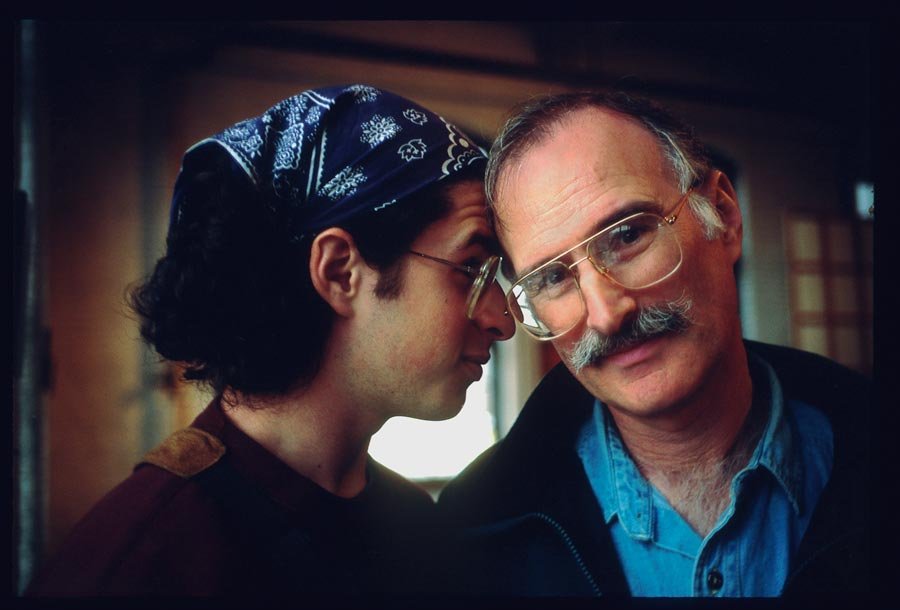
While visiting her uncle Andy in the Berkshires in 1996, Gross caught a moment with his son, Ethan, at a warehouse in Bennington, Vermont. “The light was just beautiful and I wanted to make a picture expressing what I felt was going on between the two of them. Affection and love and a little something else…the tension between parent and child.
“I’m way more interested in showing that tension, showing that relationships are complicated, so much more than just having everyone in the picture smiling.”
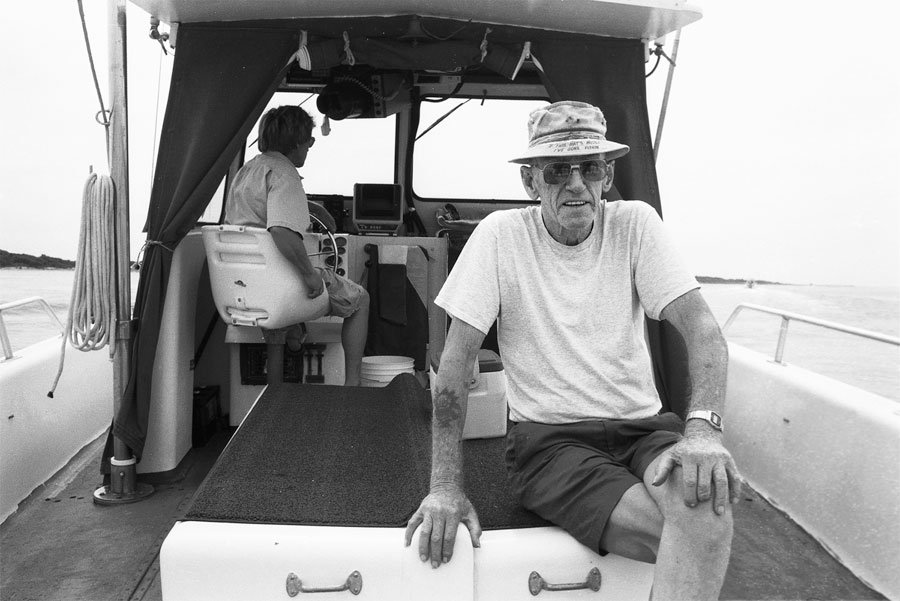
Gross sought to show the complexity of her former father-in-law during a day’s fishing on the Chesapeake Bay. “We were out on my ex-brother-in-law’s boat with Pop Danley. Pop’s hat says, ‘If this hat is missing, I’ve gone fishing.’ I took a bunch of pictures. I wanted to show the dichotomy between this incredibly hard, intense man and his great love for the water—the only place that he was ever completely happy. He’s photographed at the place he belongs.”
Gross photographed her son Emmett on his second birthday in a much-loved canoe on Stockbridge Bowl Lake in Massachusetts (top photo). “I shot a roll of film of Emmet most of which was basically blurred by his energy. This one image shows a moment of stillness. I wanted to show a calm moment but in a way I picked the most untrue picture.”
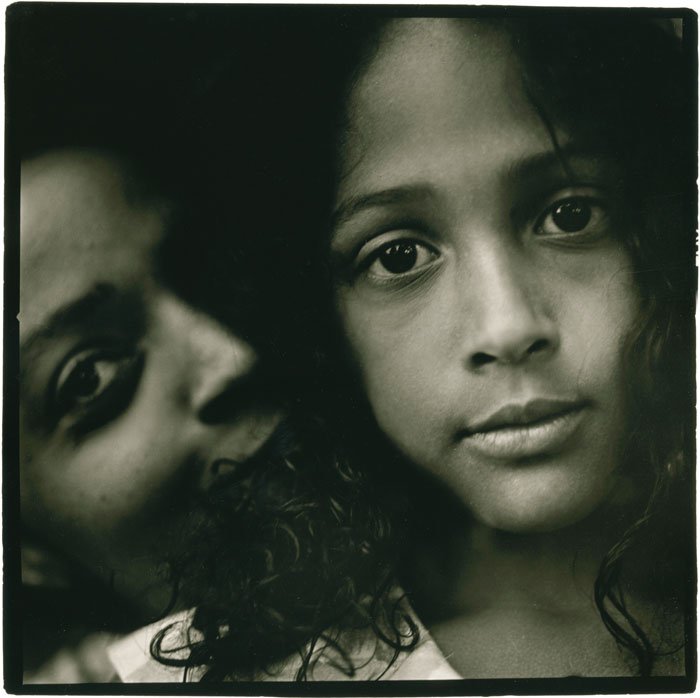
Stephanie also likes to shoot portraits outside of her immediate family. She caught the ambiguity of the mother and daughter relationship in photographing her friend Colette and her daughter Josephine. “Colette was a teacher, activist and single mother. They were sitting on my front porch (in Nelson County, Virginia), and I asked if I could take their pictures. Colette did not want to be in the picture. She’s hiding behind her daughter. I love the intensity of their expressions. ”
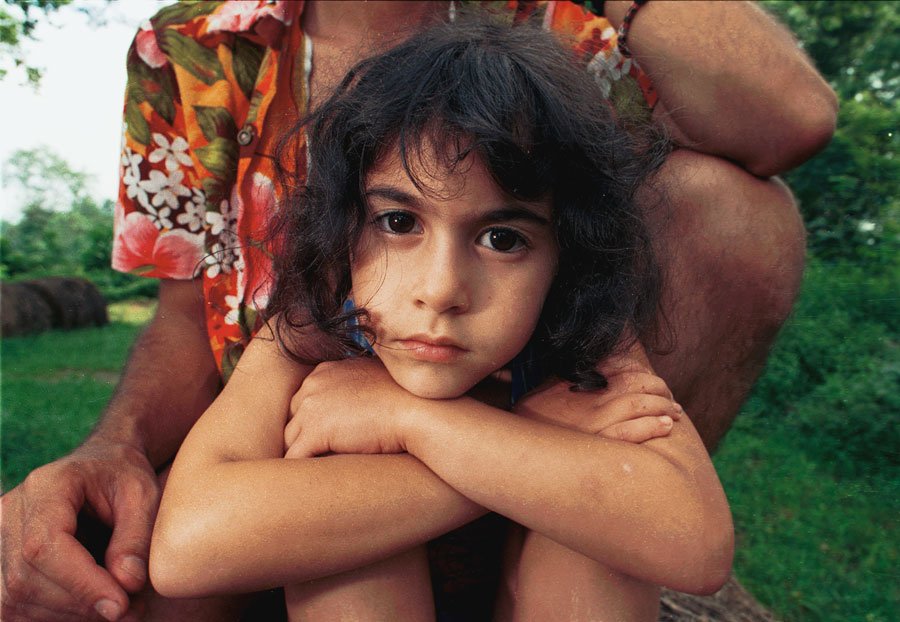
Gross made this picture of Lloyd Wolf, her high school photography teacher, and his daughter when they visited Madison, Virginia, for him to work on an extensive project. “They were sitting on a hay bale together. It was sort of a picture of both of them but letting Emma have the stage. I love Emma’s super intense, little face. Lloyd’s face is not shown but he’s still an incredible presence. You can tell by his shirt, there’s nothing subtle about him.”
When shooting portraits for a variety of clients, Gross considers the story she encounters as well as her client’s wishes. “Then the question as a photographer is whose voice am I trying to speak with? I have to be careful speaking with my voice when I’m making pictures for other people.”
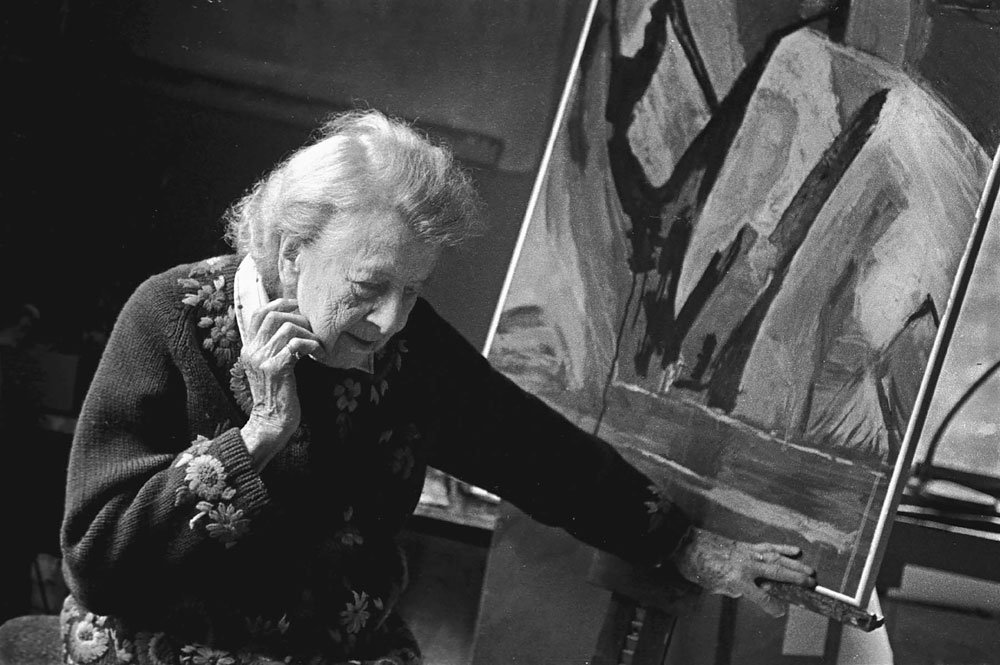
Gross was asked to photograph Virginia artist Hartwell Priest in her home studio. “I think the picture is a moment hovering between her strength (as a painter) and not painting. She’s reflecting. There’s a tentativeness and maybe a moment of faltering which was so much more true about where she is. I think that’s why I like that picture so much. She continued working hard past 100.”
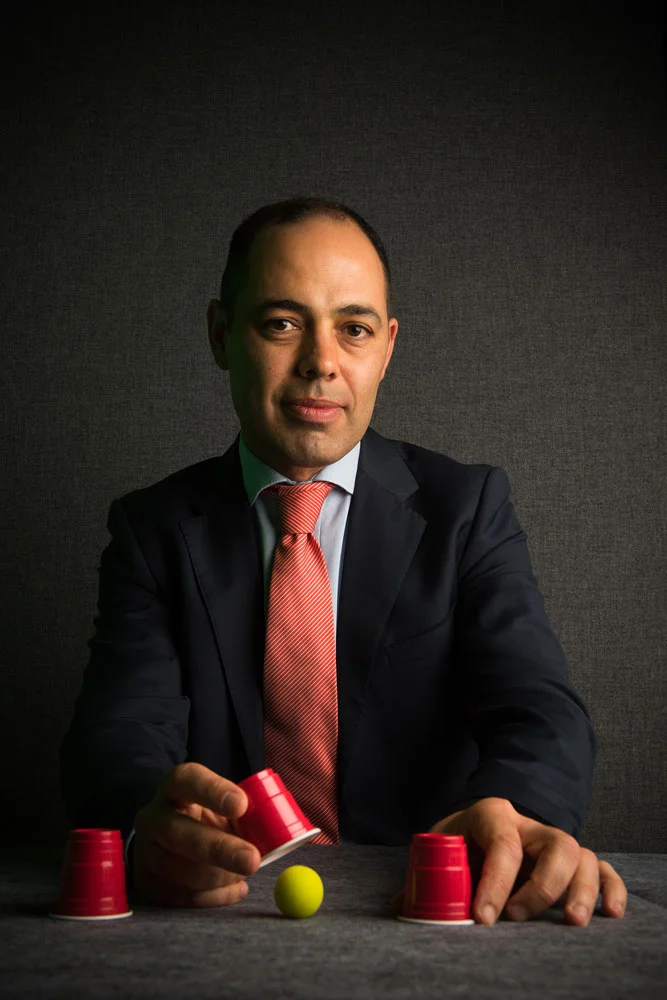
Gross had never met Pedro Mateo, associate professor of finance at UVA’s Darden School of Business, when assigned to photograph him. “This is a man with a whole life story—a husband and father who grew up in Lisbon. But the story that I was hired to tell was about his research (international corporate governance and the importance of institutional investors in world financial markets). It was about chance (a study on passive versus active fund managers and which to use), so I showed Mateo almost like a carnival side show with this shell game in front of him. It was shot with a slightly wide angle to accentuate his hand and the game of chance. This picture might not say who he is in the world as a person in a larger context, but it’s the little sliver of an important story that I’m trying to tell in the moment.”
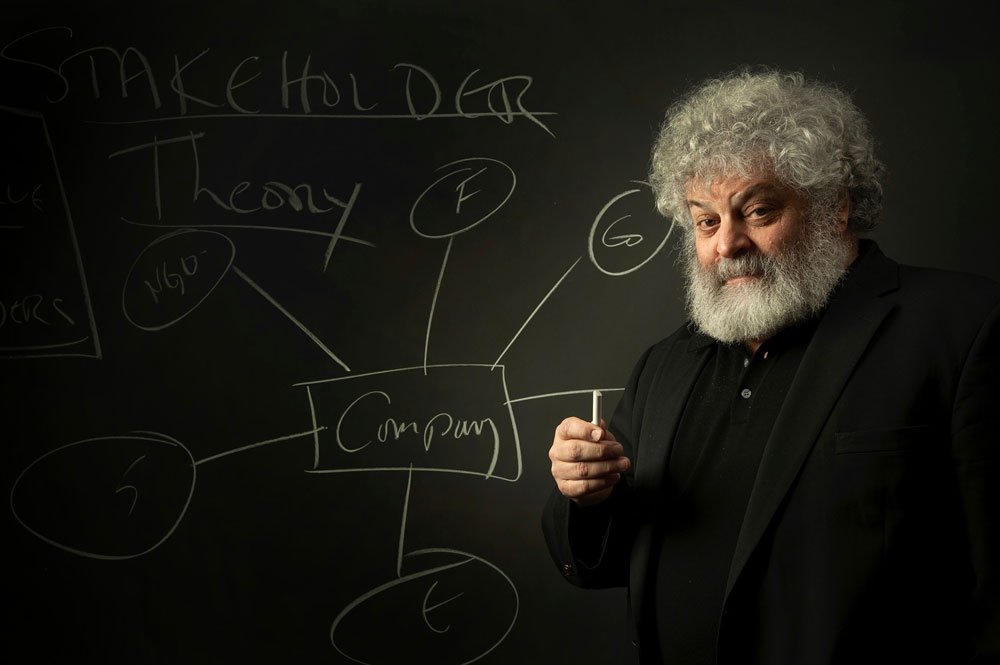
Gross was also challenged how to best represent Ed Freeman, professor of business administration and Academic Director of the Business Roundtable Institute for Corporate Ethics at the Darden School. “I wanted to show his amazing face and incredible energy. He started pretty well lit and I kept knocking the lights back. It just got moodier and moodier as we were shooting and it seemed right for him. The photo ran in black and white. The original was almost monotone. I liked the warmth of the skin tones but the client picked the image and ran it as appropriate for their vision.”
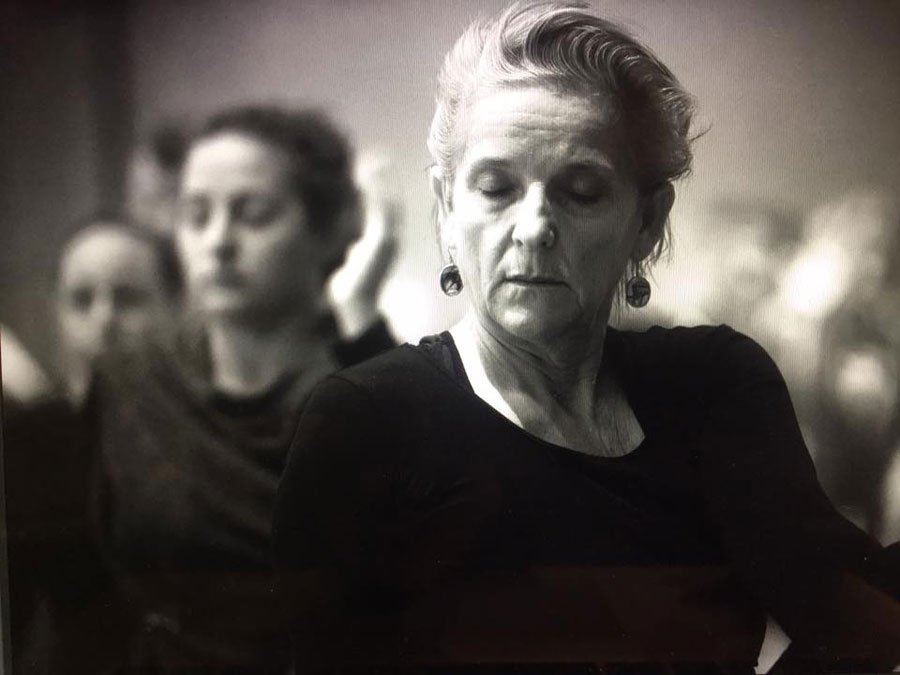
Recently, Gross was assigned to cover a conference of the Mind and Life Institute which studies the intersection of contemplative studies and science. Most of the conference involved people listening to speakers at podiums with their Power Point presentations. “The question in those circumstances,” she notes, “is how to find images that describe the idea of what’s going on beyond the literal circumstances.”
Searching for emotional, descriptive images, she aimed for an early morning yoga class only to find the light minimal and constantly changing. “The light was so bad and the color dreadful, I thought ‘I’m just going to make the photos in black and white.’ I was tapping out my camera’s ability to record images in the darkness. Then I started paying real attention to the light. One woman looked up and the light lit her face. Another woman was in a pool of light, and a guy behind her was in darkness. I played with the light in the foreground and dark in the background.
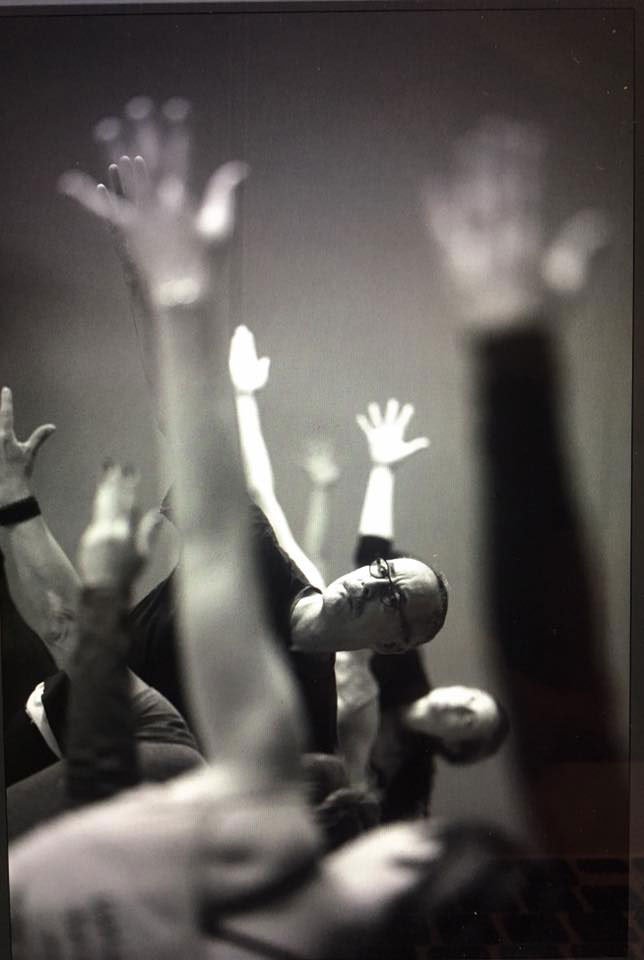
“Being hampered by technical problems sometimes also gives you boundaries that you have to bounce off of. I wasn’t trying to show a room full of people in a very dark conference hotel room doing yoga on hotel towels but hopefully what they were really striving for in the interior.”
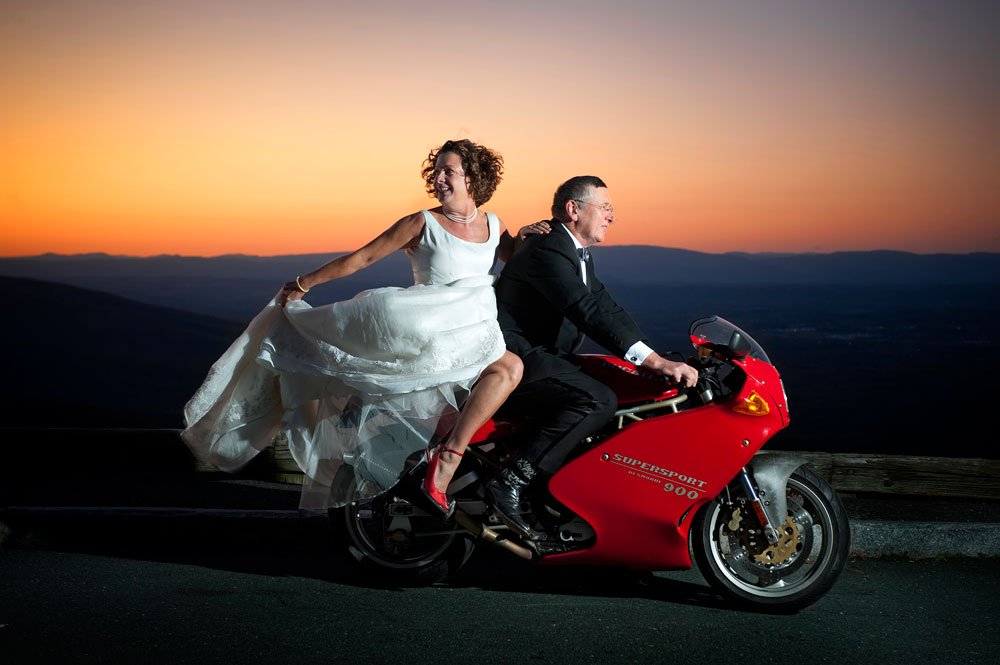
And Gross still takes portraits for pure pleasure. A year after photographing the wedding of Louise Largiader and Jay Gwaldis, she arranged for another celebratory picture. This photo caught the couple on Jay’s Ducati motorcycle, a bike Stephanie admired as an owner of a Ducati Monster. “I liked the idea of the two of them in their wedding clothes on this incredibly sexy motorcycle up on the Blue Ridge Parkway at dusk. Obviously no self-respecting woman would get on a bike with that kind of dress on and no helmet…The wind was blowing. It’s complete fiction. It was my picture and just for the fun of it.”
Gross’s varied and poignant photographs have appeared in the Washington Post, the New York Times, the Philadelphia Inquirer, Mothering Magazine, and UVA publications. Her work has been shown from the Washington Center for Photography, Piedmont Community College to the Texas Photographic Society.
She teaches students one-on-one as well as classes at John C. Campbell College in Brasstown, North Carolina. Perhaps inspired by her teacher Lloyd Wolf, Gross works with organizations she believes in, among them the Women’s Research Initiative on HIV/AIDS, Focused Ultrasound Surgical Foundation, The Piedmont Housing Alliance and The Licensing Venture Group.
“I feel so lucky to be able to photograph organizations that are trying to make the world a better place. I love to make portraits, and even family portraits,“ she says, “but my greatest love is telling stories for organizations that are doing good work to change the world!”
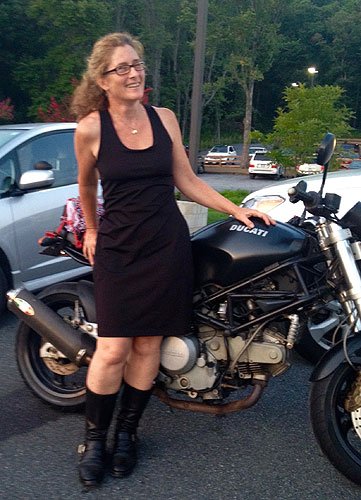
Visit www.stephaniegross.com to see more of Stephanie Gross’s work.
Elizabeth Meade Howard – art editor
Share this post with your friends.

Terrific Photos from such a talented photographer! The text adds to the pleasure of viewing these; always interesting to learn what the artist had in mind.
What joy to read this article about Stephanie, and her talent for seeing people & places with exceptional insight!
thanks. And mazel tov!
beautiful, so evocative of different aspects of life, feelings and also joy and ability to show human search in her yoga image.
Andy Gold helped me discover you
Such amazing photos–and so diverse! I love looking at the photos while reading Stephanie’s thoughts and learning about her process. Great also that she shares some background about the people in the portraits. I’ve had the pleasure of watching Stephanie work, and it’s clear that she wants to know as much as she can about her subjects before she photographs them. They are more than just pictures to her.